A comprehensive Guide to Build a Successful LinkedIn Marketing Strategy
On LinkedIn, business people find the community they’re looking for. While it may not get as much attention as Facebook or Instagram for business marketing, it is widely used. Other experts and leaders have also found ways to make use of the platform. Firms that have a presence in the B2B industry value it.
It doesn’t matter if you are working for a small firm, a business-to-business (B2B) organization, or a business-to-customer (B2C) enterprise. LinkedIn will always be relevant in any marketing strategy. For companies, there are two advantages to using LinkedIn for business. Firstly, businesses can target extremely specific audiences, and this has a beneficial influence on recruiting, brand reputation and positioning.
To learn more about LinkedIn as a marketing tool to design a new LinkedIn marketing plan, you have arrived at the right place. Get your LinkedIn marketing strategy going, along with a few tricks to help you manage your day-to-day.
The growth of LinkedIn in 2021
LinkedIn now has over 720 million users, with 303 million monthly active members who frequent the site on a daily basis. While important for many firms, LinkedIn has over 90 million top influencers and decision-makers, as well as 63 million decision-makers. LinkedIn is used by 97% of B2B marketers as a means to distribute content, and it’s accountable for 80% of B2B leads obtained through social media.
LinkedIn reported a 55% rise in the number of discussions taking place between LinkedIn connections in 2020. This calculates Q1 of the 2021 fiscal year one year in advance. Because they can’t meet in person, they’re communicating more on this corporate social network. LinkedIn’s content impressions have increased fifteenfold (15x) since the site began featuring articles about the companies in their area. This shows that LinkedIn has evolved from merely a job board to a business networking platform where individuals learn about their industry and others.
How does the LinkedIn algorithm work?
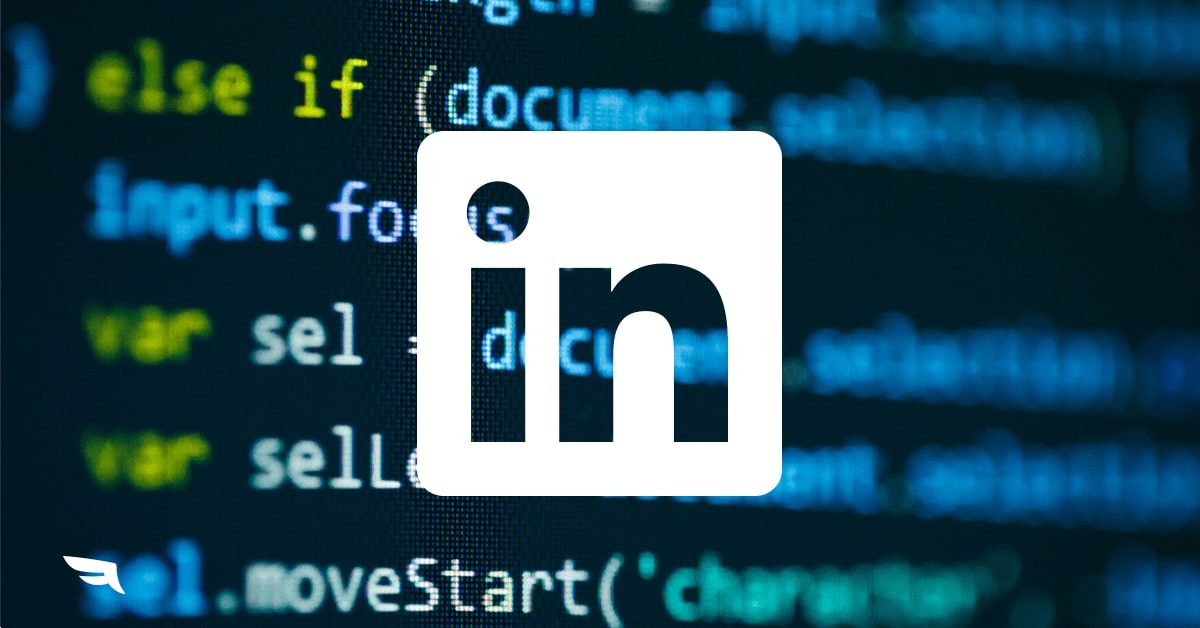
The LinkedIn algorithm is clear about how it works:
-
AI bots look for spamming content to make sure it isn’t happening. Your content may fail this test if it doesn’t entice a large audience. Share only quality content on LinkedIn.
-
Your post will be introduced to a small, limited audience for the purpose of gathering feedback. The algorithm will look at the engagement of the first persons that were targeted. If your content doesn’t attract them, your LinkedIn posts won’t be shown to many more people.
-
According to LinkedIn, if your first audience accepts the post, it will perform additional checks to guarantee that the results are not spam and credible for your target audience network. To increase the number of account holders who receive posts, they will expand the number of the individuals to whom they provide them.
-
Human editors will finally intervene if your content is still performing well. They’ll read the article and assess whether it’s worth promoting.
Why should businesses employ a LinkedIn marketing strategy?
LinkedIn’s major advantage is that it has a significant number of influential senior executives, managers, and opinion leaders on its user base. When it comes to upper-level professionals, a solid LinkedIn marketing approach like Kleo can ensure you garner their attention. The procedure is simplified by utilizing well-established LinkedIn marketing strategy templates that are readily accessible on the web.
LinkedIn provides a wealth of B2B marketing opportunities that other social media platforms, such as Facebook and Instagram, do not offer. There is no doubt that having a successful LinkedIn marketing plan is critical to your business’s success. Advertising on a website helps increase website traffic, boost brand awareness and assist to create quality leads. Finally, it will also make you a prominent voice in the sector.
How to develop a comprehensive LinkedIn marketing strategy in 2021?
To promote your brand on LinkedIn, you must first determine the goals and techniques that you will employ. One must identify one’s target audience to design an effective LinkedIn approach. Finally, let’s see the strategies used for LinkedIn marketing.
Step 1: Determine your business goals
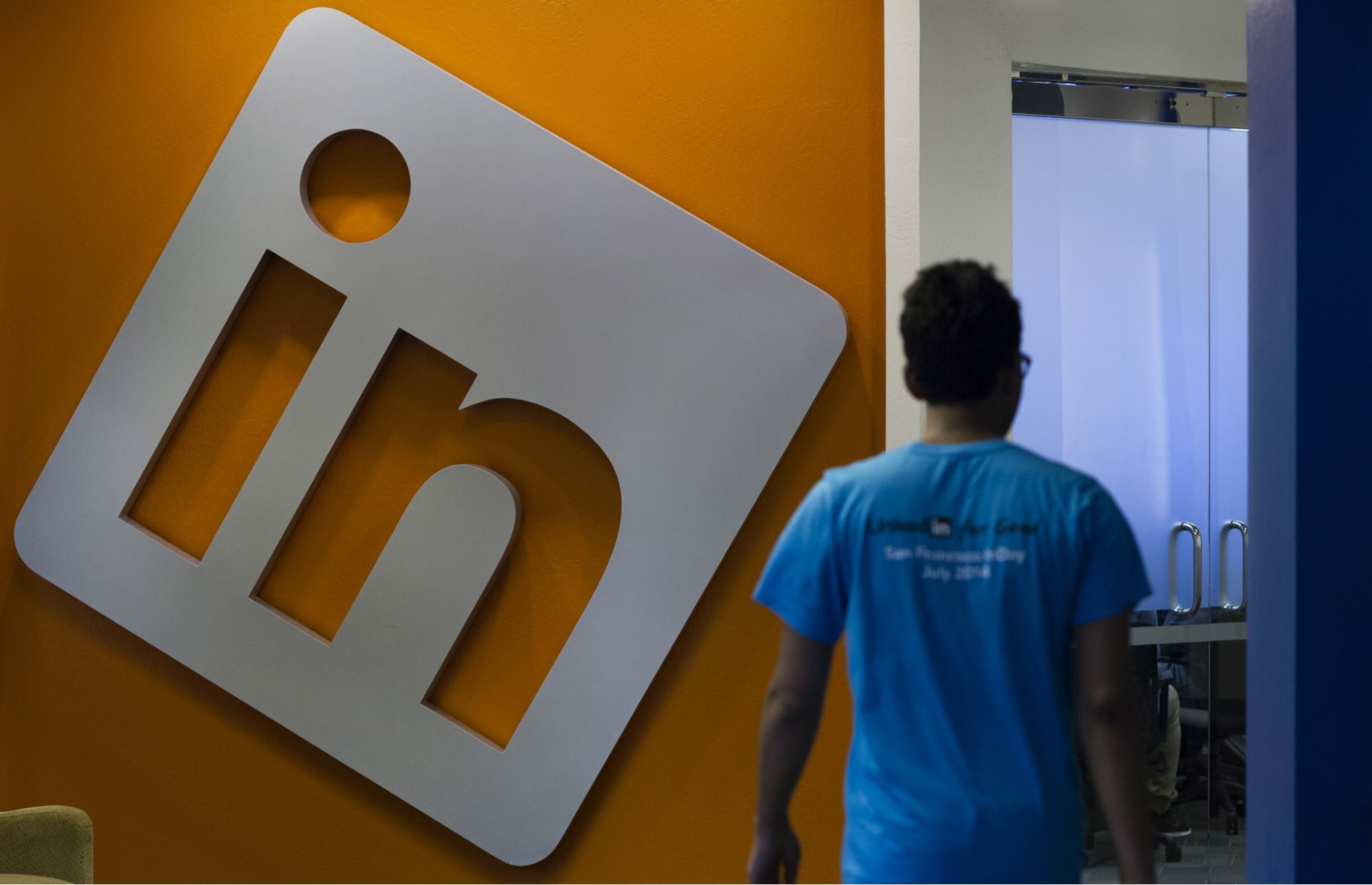
Other social marketing platforms such as LinkedIn are no different from each other. In order to be successful, your campaign goals must be defined and implemented. To find out why you’re implementing a LinkedIn marketing plan, you should ask yourself why. What do you hope to accomplish?
These are the criteria you should have in mind when setting your goals: SMART - Specific, measurable, attainable, realistic, and timely. More importantly, you need to make sure you can evaluate the results of the campaign using some relevant metrics. Typical objectives are:
- Boosting brand recognition: using data from your LinkedIn page.
- Finding prospects on LinkedIn: getting connected with key potential customers/clients.
- Engaging your target market: gathering interest from your LinkedIn page analytics and group community
- Creating a sale for your product
Step 2: Define your target audience
When it comes to social marketing, one of the most important factors is a complete awareness of your target audience’s interests and demands. Marketing to the uninterested is a waste of money and time. As an example, if you sell a product targeted at teens who are still in school, you wouldn’t spend much time on LinkedIn, unless that is a source of new customers for you. While potential customers may be on LinkedIn, you should use it as an opportunity to provide greater insight into their demographics.

Before you know the name of the company, you need to know the people who will buy your product. When selling B2B products, you may find that you will deal with some unique management within each firm. To really understand who would make a purchasing decision, or who’s within a corporation to provide advice, you should inquire about how a certain manager would vote.
You may view your analytics to obtain a basic concept of the individuals that are interested in your page.
Step 3: Create a company LinkedIn page
Your organization requires a LinkedIn page before you can start using LinkedIn marketing. You will first need to create a LinkedIn profile before you can proceed.
- Go to the LinkedIn Pages section of the LinkedIn Marketing Solutions website. Click “Create your Page”.
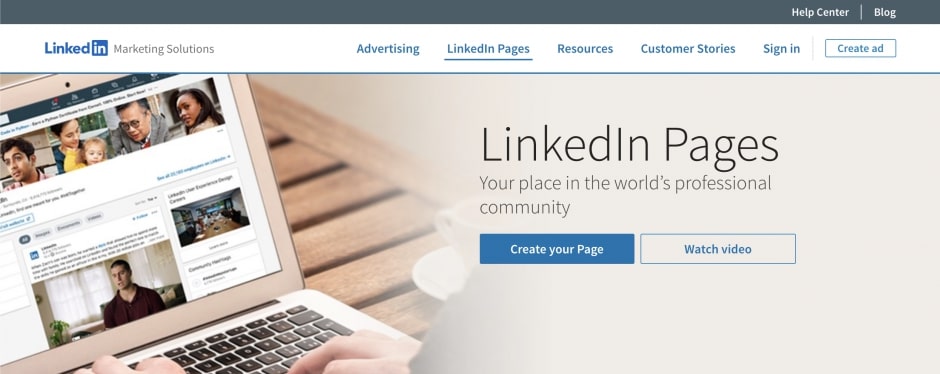
- Determine the best category for your company

- Enter your business information. A page preview shows how your material will look as you edit it. Be sure to pick a URL that helps spread the word about your brand. Make it as close to your username on other social networks as possible.
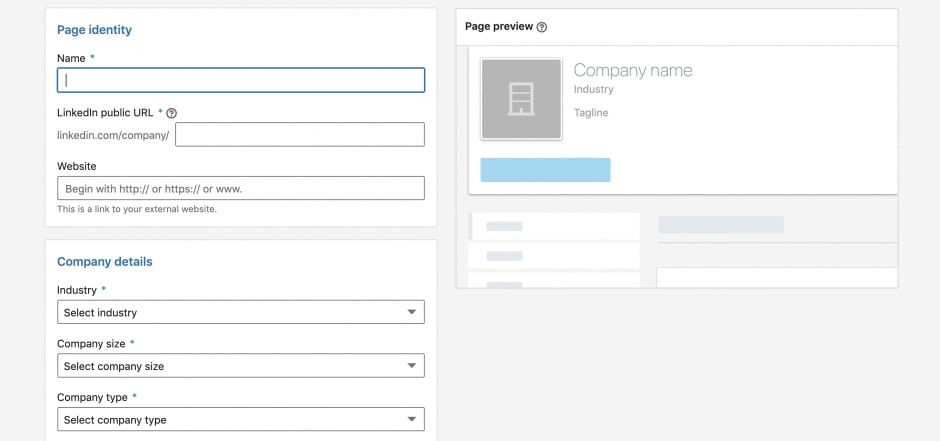
- Go to the upload page to upload your company logo and add your tagline. You don’t have to complete this step, although it’s highly recommended.
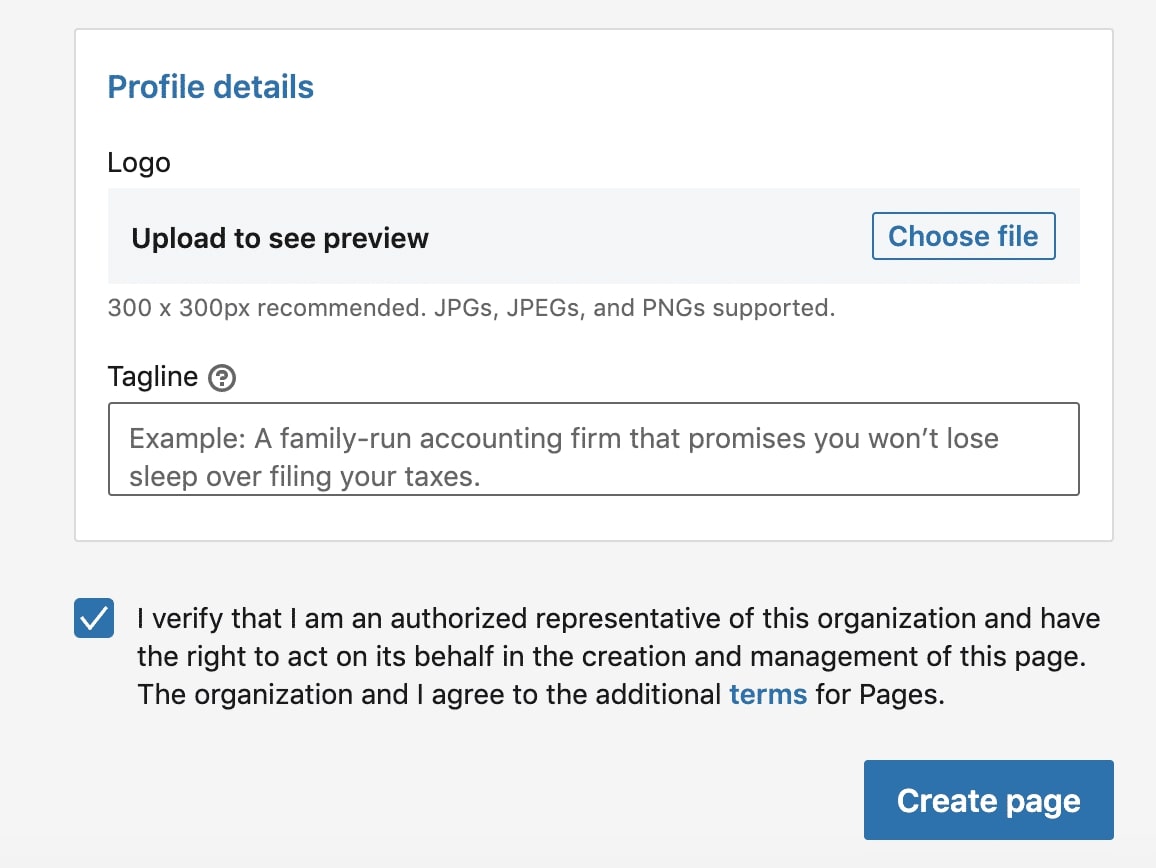
- Now click the ‘Create Page’ button.
Step 4: Polish your company’s page
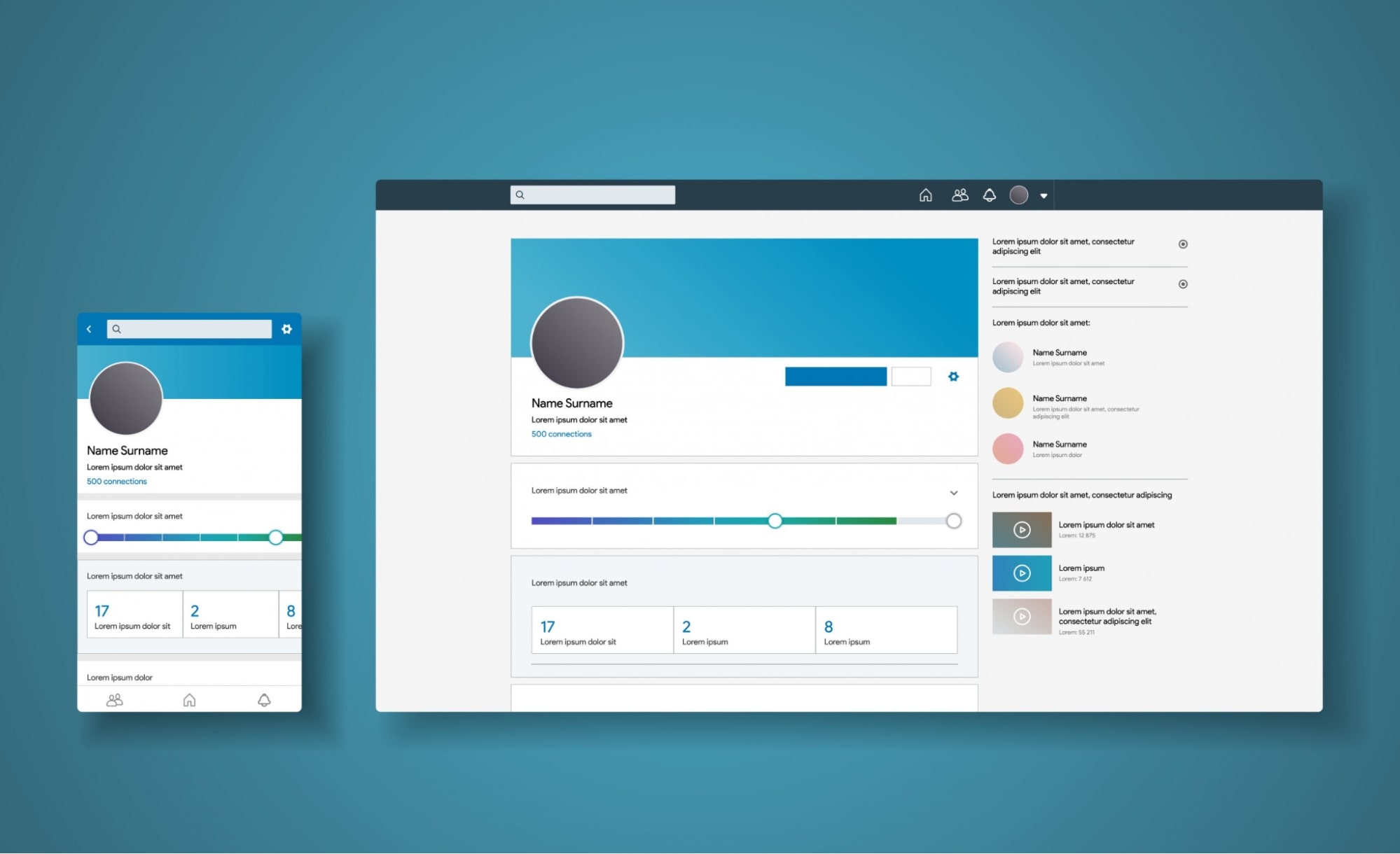
LinkedIn will establish a corporate profile for you if you’re added as a manager or employee to any organization. However, unless you include new information and/or fully populate your page, your page will appear as though it is unkempt and unclaimed.
To get the most out of LinkedIn, you’ll need an appealing, informative corporate page. It’s probable your target audience will be on LinkedIn somewhere close to where you will be presenting. Whether you are selling things or building brand recognition, you should think of it as a virtual store.
You may find more information about your firm on your profile by clicking the pencil icon next to your company name.
-
Location: List your store or office. Selecting “+Add Location” will allow you to include additional addresses.
-
Business description: Briefly describe your company’s vision, mission, values, and products and services. Your own brand voice should be used while creating a duplicate. In the case of Google, you can preview 156 characters of your page’s content when using the results preview feature, so make your description SEO-friendly by containing keywords.
-
Hashtags: You can add up to three hashtags to your profile to help you be found. When searching for relevant hashtags for your business, search for ones that are regularly used in your industry, and use those.
-
Cover photo: Use a polished background photo on your profile to make it look more finished. Pick a photo that reflects your company. Recommended size: 1584 x 396 pixels.
-
Custom button: Encourage action with a button on your profile. Users have the option of viewing the website, getting in touch with us, learning more, registering, and signing up. If you click the button, be sure to link to the appropriate page. Always include a UTM coordinate so you can keep track of it.
-
Language representation: If you have a worldwide brand or an audience that speaks more than one language, you can include your name, tagline, and description in a total of more than 20 different languages.
Step 5: Promote your company page
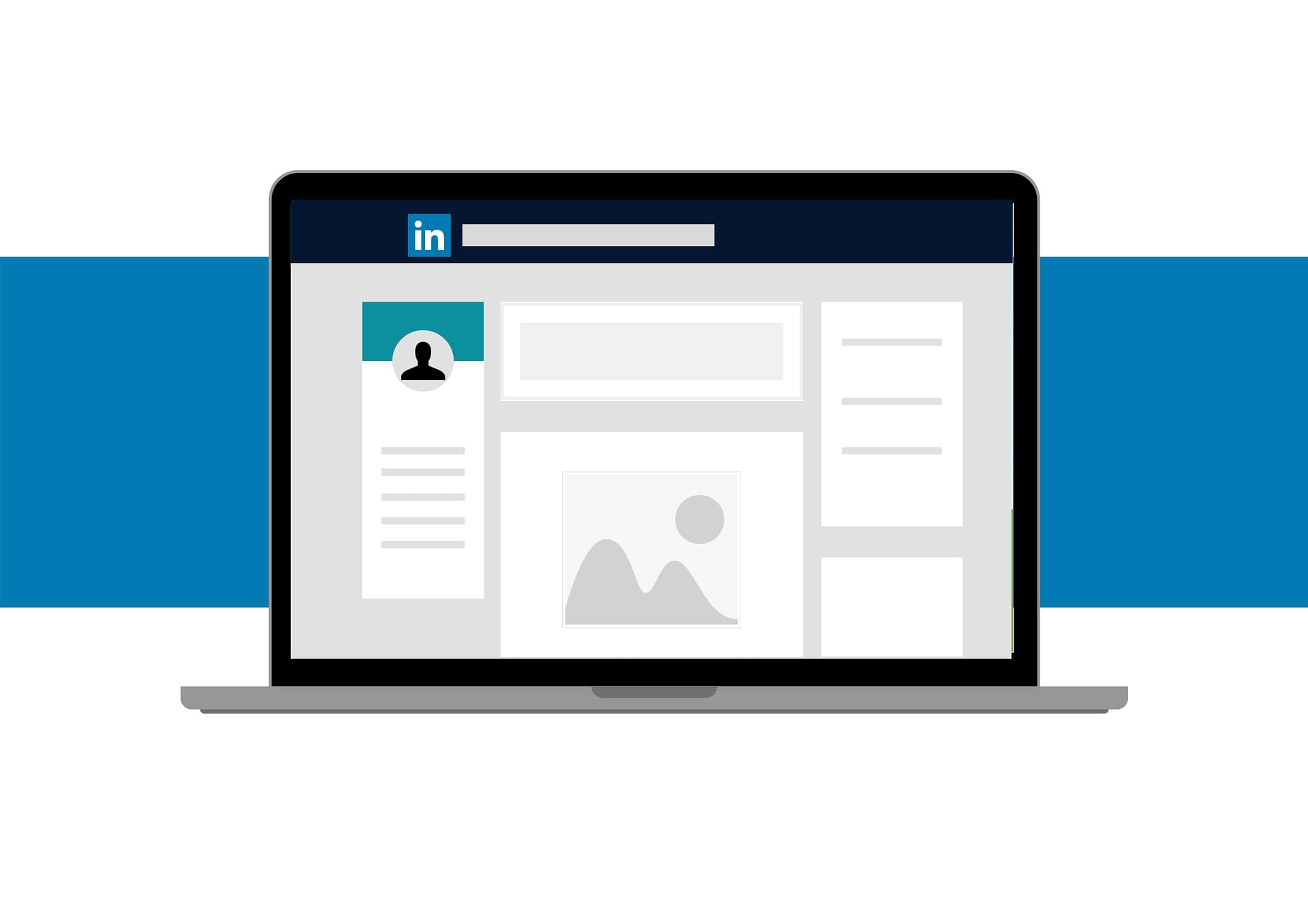
SEO is essential for your company’s website to appear in LinkedIn searches, but, if you want people to visit your site, you must supplement your SEO efforts with strategic keyword usage. By having these settings, you’re potentially limiting yourself to only 1-2 new visitors per month.
Whenever you get the opportunity, you should promote your page. To get your audience to follow you on LinkedIn, use a LinkedIn logo on your website, as well as in other media like Facebook and Twitter. You are more likely to succeed on LinkedIn if your page is as prominent as possible. By promoting your content and updating frequently, you will stay fresh in the minds of your audience, and they will see your posts and updates in their feed.
The best way to begin this process is to ask everyone who works for you and your management to set up a personal corporate page. Hopefully, you will then have enough data to appear legitimate. In your email signature and newsletters, you can add a link to your LinkedIn page. Also, be sure to send invites to your current customers to come back and follow your company’s updated LinkedIn page.
Step 6: Evaluate competitors’ websites
Know how you compare to your competition when it comes to LinkedIn marketing.
LinkedIn’s “Companies to Track” tool shows you a list of comparable companies. It also gives you access to a number of crucial performance indicators. Follower growth, social media engagement, and total follower count are all key factors in social media strategy.
Doing this will help you better comprehend how your Company Page stacks up. The more LinkedIn-specific strategies you employ, the more successful you’ll be in your search for a new job.
Step 7: Create a content calendar for LinkedIn

Draw up a content calendar for LinkedIn. Take the time to plan out pieces before writing them so you have the ability to find photos, draft thought leadership articles, and assemble content beforehand. Ensuring that all of your LinkedIn marketing goals are addressed is enabled with this as well, including webinar promotion and interaction.
Step 8: Write meaningful, engaging content
Although LinkedIn is a more developed and professional social network than some of the others, it’s crucial to remember that it is still a young, dynamic platform. Of course, it’s an excellent place to start and grow your blog to capture your target audience’s interest. To generate Thought Leadership content, LinkedIn is especially suitable as it allows you to display your experience in your niche.
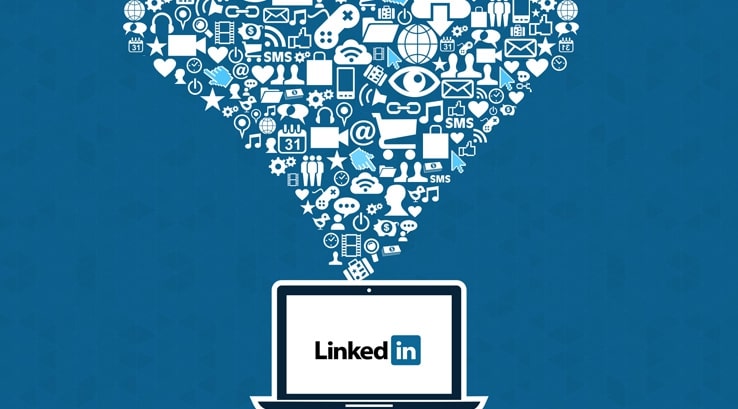
Studies reveal that LinkedIn’s algorithm favours original content that has been posted on the network rather than boosting links elsewhere. You can use LinkedIn to produce blog entries and leave it at that. When using the LinkedIn Publishing Platform, members can write, edit, and share articles within the LinkedIn mobile app, however the platform is not yet available.
You don’t have to produce all of your LinkedIn material from scratch. Your target audience can benefit from sharing other content that you find that you think will be of value to them.
Step 9: Learn from LinkedIn analytics
When setting up a LinkedIn marketing plan, establish targets that are SMART. To achieve these aims, your projects must have measurable objectives. As a result, it is essential that you dedicate time to check your progress in relation to attaining those goals.

LinkedIn Analytics for your company page often has the data you need. Discovering information like this can help you learn more about the site visitors, and in turn, how they have connected with your material. Monitor some LinkedIn KPI metrics such as the demographic makeup of your LinkedIn followers, the number of followers, impressions, and reach, as well as your engagement rate and the number of views for each job title. Increasing your reach in your industry will be a help for you.
When compared to other prominent social media platforms, LinkedIn doesn’t enable media intelligence providers to monitor the platform in the same way. On the other hand, LinkedIn gives its LinkedIn company Page Administrators rather strong native analytics and LinkedIn marketing options.
You can see all of your LinkedIn marketing options and performance information in one centralized location by clicking on the analytics tab. Consider, for example, discovering how your followers and visitors are distributed, understanding how well your updates perform, and if you’ve added LinkedIn Career Pages to your page, you’ll also be able to have access to Talent Brand data.
Some extra tips to thrive in LinkedIn marketing in 2021
#1 Create media-rich content
Photos and videos posts perform better on social media than text-only posts. Using visuals is more likely to result in better engagement than using text alone. For the most part, you would want to incorporate a picture or text into a text-based content.
To sum up, articles with photographs on LinkedIn attract almost three times as many comments as those without. Using a bespoke collage that contains three to four photographs in a single post has proven successful for Pages on LinkedIn.
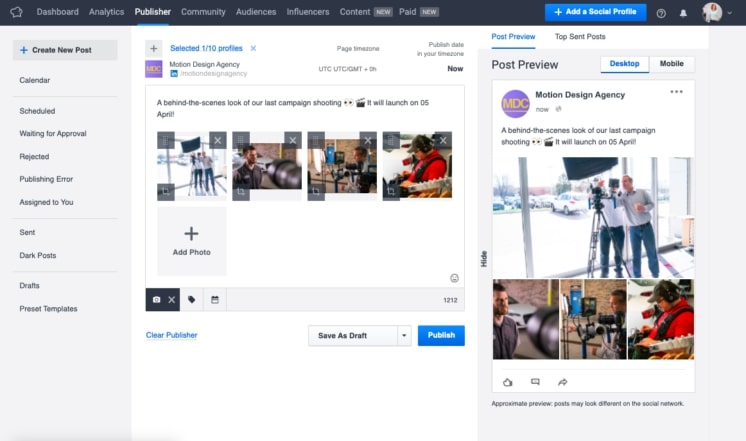
If you can, try to avoid using stock imagery in your photos as people respond more to personalized graphics. To aid in the preparation of your posts, you can also upload PDFs, PowerPoint, or SlideShare presentations. Your post is similar enough to someone else’s content that readers will likely be interested in following your page.
The amount of engagement video receives on LinkedIn is almost five times more than any other content type, as that content type is preferred by the LinkedIn algorithm. One of the major benefits of LinkedIn’s native video is that it automatically starts playing as someone scrolls by it. Thus, it catches attention better. Keep in mind that you need to add closed captions for deaf and hard of hearing viewers.
#2 Optimize reach and impact
LinkedIn has a few guidelines for business accounts when it comes to adding content.
The following signals are used by LinkedIn’s algorithm for generating its content recommendations: personal connections, relevancy to the user’s interests, and the likelihood of user involvement. What this means is that it will provide users with stuff that will engage and interest them, which they can follow from accounts they find engaging. Every post you make should have the same goal.
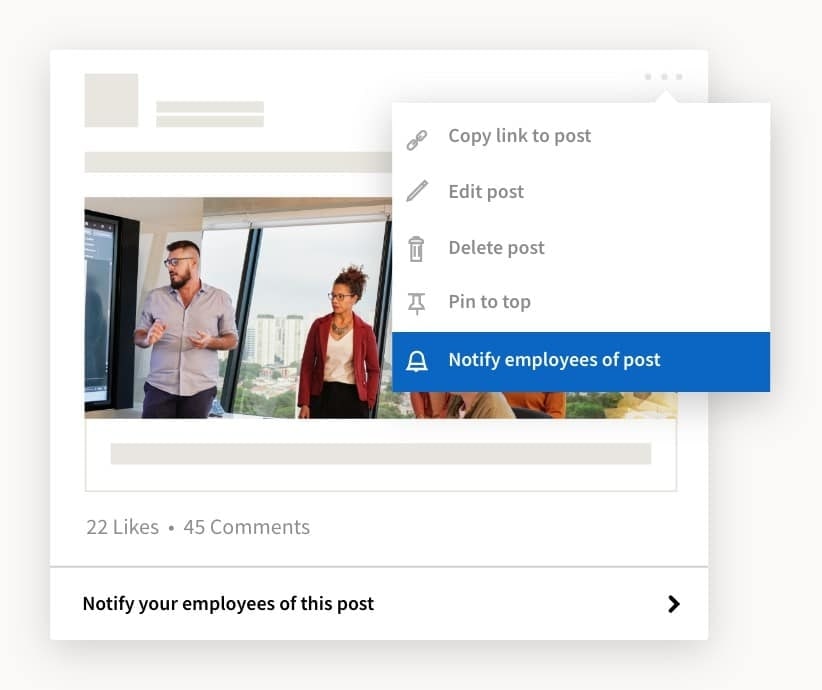
If you think an employee would be interested in the position, notify them. As brand advocates, they can have their work cut out for them, as they can try to raise engagement on the post and gain its prominence.
#3 Decide the best time to posts and post frequency
To get the highest engagement outcomes, LinkedIn recommended updating at least everyday.
Your timing for posting is based on the activity of your audience. So it varies from one business to the next. Hot spots for driving engagement, such lunch hours and while commuting to and from work do happen occasionally, of course.
Marketers on LinkedIn have found success by posting on Tuesdays and Thursdays between the hours of 8 a.m. to 2 p.m. To begin, utilize this as your base and A/B test the strategy on different days over the week. Also, it is imperative that you track your efforts to make sure you can pinpoint the areas in your audience’s day when they are most engaged.
#4 Gain an understanding of the algorithm
LinkedIn uses an algorithm to scour its members’ posts each day in order to give them more relevant content. However, one can’t hack the algorithm (it changes on a daily basis exactly like Google). Specifically, they use the phrase “people you know talking about things you care about” as their motto.
Boosting your profile’s visibility through ‘people you know’ can be greatly impacted by interacting with your connection’s material. Additionally, the more people in the same firm you interact with, the better, as this indicates a personal connection.
#5 Include relevant tags
Engagement is a big factor, and posts that start conversations are rewarded. In other words, the more often your post is commented on, the greater the likelihood that it will appear in the feeds of your network. So make sure to ask questions, bookmark interesting companies, add keywords to your posts, and utilize relevant hashtags.
#6 Mention people in your updates

It is a vital phase in your LinkedIn marketing strategy to tag people you’ve cited or you’ve referenced your material. You’ll also send a notification to everyone you’ve tagged and anybody who follows them, which increases the likelihood that your material will be seen by others.
LinkedIn’s promotion strategy can help posts on your page become more visible, and this, in turn, can help boost the total level of engagement.
#7 Go LinkedIn live
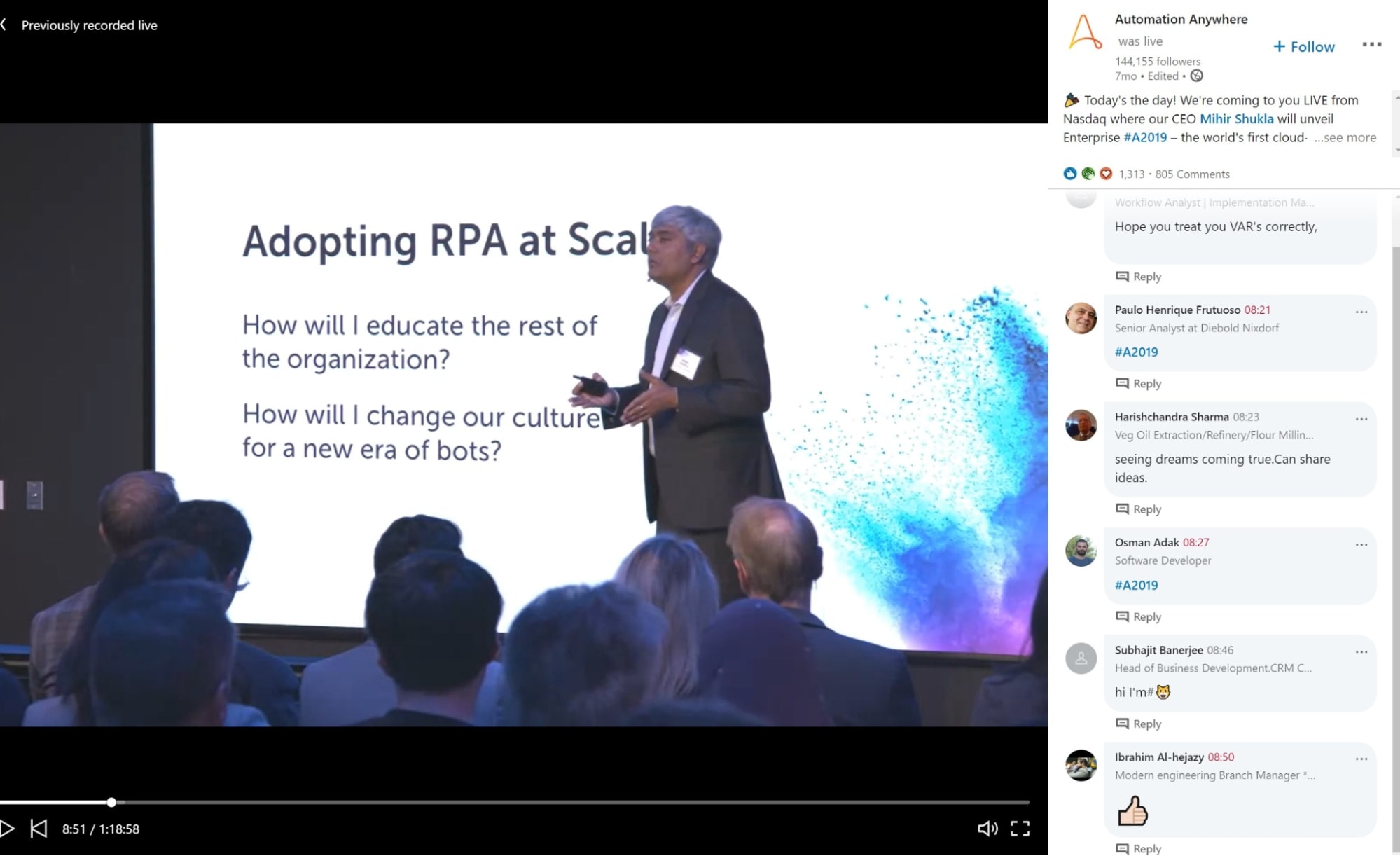
LinkedIn’s video is the most engaging medium other than live video. In comparison, pre-recorded videos get 24 times the engagement. Marketers and brands have used webinars, fireside talks, and interviews to go live in recent years. A few individuals have even had virtual gatherings conducted in their backyards. One of the benefits of the format is the ability to engage audience members with comments and questions while retaining their attention.
Make sure to promote your live LinkedIn event before you host it. We are active on LinkedIn, but not just on LinkedIn. Make an effort to reach all your audience touchpoints and share the message.
#8 Respond to comments
Your marketing staff should reply to every thoughtful inquiry, contribution, and complaint, no matter how massive the brand is. Feed exposure, as well as the tendency of community members to follow social media pages that are very active, are both positively affected by engaging the community. If you fail to listen to your audience, they will eventually stop paying attention to you.
#9 Make good use of LinkedIn advertising
LinkedIn advertising assists small and medium-sized businesses of all sizes to accomplish their objectives. Your goal may be lead generation, brand exposure, or event registrations, but LinkedIn advertisements can help you accomplish each of these objectives.
Using LinkedIn for B2B account-based marketing campaign advertising is beneficial since the platform offers a wealth of information about the audience’s working lives. To give another example, you may use LinkedIn ads to deliver messages to the right people by identifying which categories of job titles, roles, industries, and more you should be focusing on.
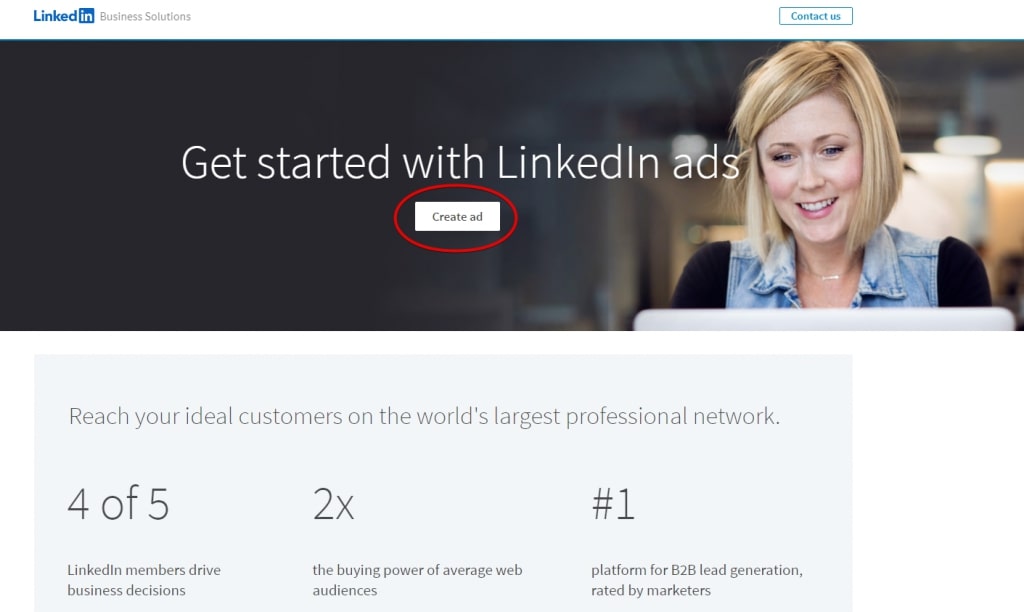
To assist with meeting your marketing plan goals, here are some of the numerous sorts of LinkedIn advertising you can run.
Paid content
The native LinkedIn advertisements functionality offers the ability to display sponsored content in the feed on both desktops and mobiles. The advertisements found on the websites of sponsors usually fall into one of the following formats: single picture sponsored content ads, video ads, and carousel ads.
Paid advertising
Direct, one-on-one-native adverts can be sent straight to your target audience’s direct message inbox with this unique ad style. Lead generation forms and automated calls-to-action make this format particularly well-suited for marketing professionals.
Message Sponsored LinkedIn ad styles include conversation advertising, which enable you to inspire an immediate response by providing an open channel for the audience to engage with you, and message advertisements, which allow you to deliver messages directly to your audience.
Text-based advertisement
Text ads are a simple, self-service pay-per-click (PPC) ad style.
Personalized advertising campaign
Ads that utilize personalization, such as displaying each member of the creative’s LinkedIn profile information, including a photo, company name, job title, and more, catch attention by incorporating attention-grabbing dynamic visuals.
#10 Add a “follow” button
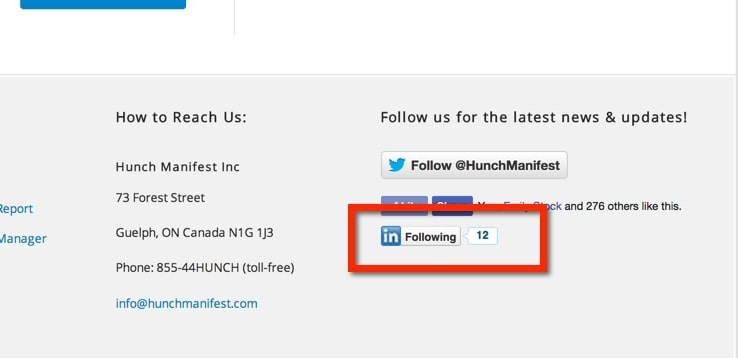
Your LinkedIn company page can be found through your email signature website. You can gain a higher level of engagement if you cross-promote your LinkedIn company page in your email signature. Your social media engagement will increase significantly with a simple call-to-action (CTA) that highlights the advantages of following you on LinkedIn. You can use LinkedIn’s developer resources to design a LinkedIn corporate page follow button for your website.
#11 Start employee engagement encouragement programs
Everyone has their own network, and when you take that into account, you’ll see how much a company can gain in terms of brand awareness simply by leveraging their staff networks.
With proper systems in place, it’s unlikely that your employees will share your company LinkedIn posts without your consent. Before doing anything else, make sure that your corporate information is translated correctly to LinkedIn on the employee’s personal profiles by quoting it correctly in the experience area. New connections made by colleagues will prompt the LinkedIn corporate page to be followed.
Include a CTA to reshare essential items in your company newsletter. According to the LinkedIn social selling index, a person’s ability to promote their personal brand, identify new people, and get in touch with new ideas are important for a job in this industry. When workers compare their scores, they are more likely to want to improve.
Final Words
Connecting your brand with the key decision-makers and top influencers is readily available through LinkedIn. With time, it has turned into a strong marketing tool that will help you establish your brand and increase your sales.
Therefore, you must admit that a strong LinkedIn marketing plan is long overdue. As you develop your LinkedIn marketing plan, an in-depth understanding of your goals and target audience is vital. Make sure you construct a really enticing Company Page and do everything you can to improve it.
Finally, you should design your content strategy and update your LinkedIn posts in a way that particularly targets your target audience. Use every resource accessible to raise your LinkedIn marketing efforts. Once you’ve been at it for a while, you can be regarded as a leader in your profession. Remember that this platform’s potential is important because it is your key asset.
New Posts






